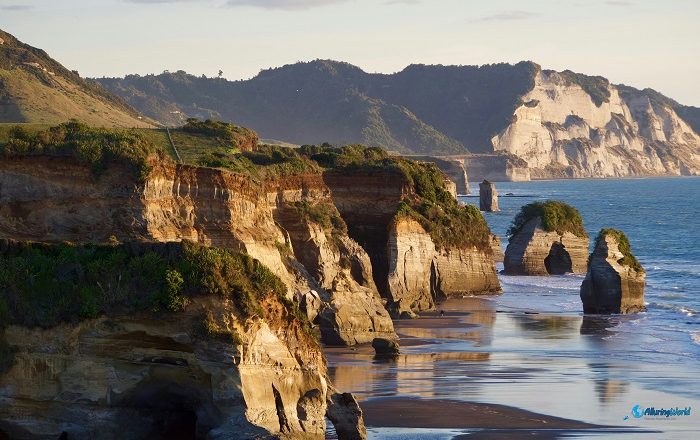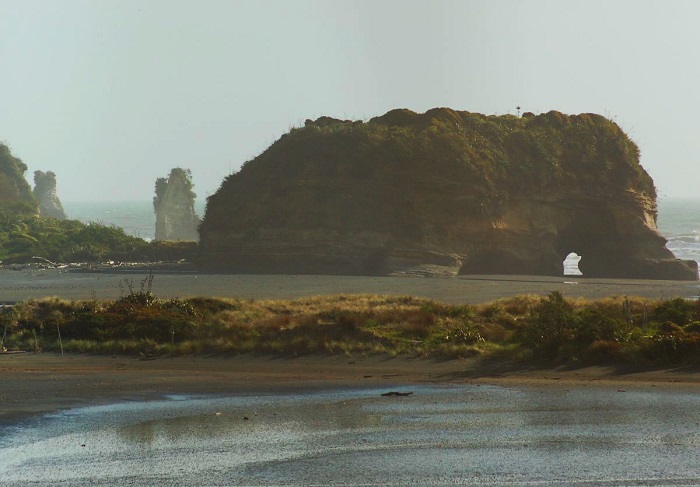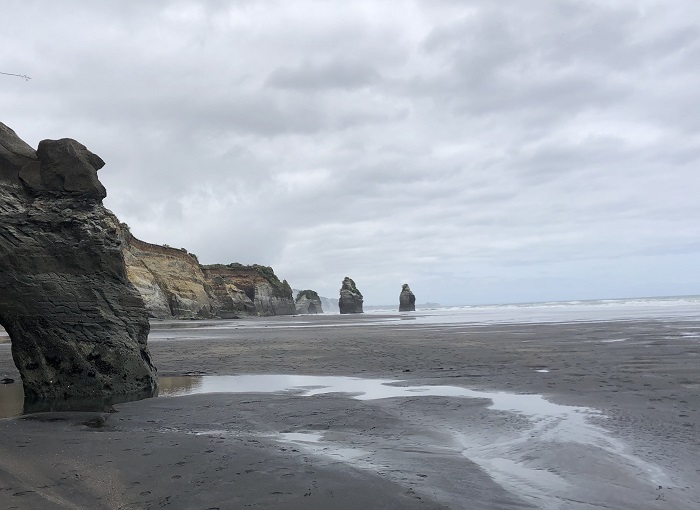The Three Sisters and the Elephant are striking rock formations located near the small coastal town of Tongaporutu in the Taranaki region, on the western North Island which comprises the island nation of New Zealand. These natural sculptures, carved over millennia by the relentless forces of the Tasman Sea, are celebrated for their beauty, geological significance, and the ever-changing landscape in which they reside, and as they are situated within the dramatic setting of the Taranaki coastline, these formations are a testament to the power of natural erosion which has become iconic symbols of the region’s rugged beauty, drawing visitors from all over the world.
The Three Sisters, as their name suggests, originally consisted of three towering rock pillars standing side by side along the beach. These formations, made of sandstone and mudstone, were once part of the surrounding cliffs but have been gradually separated from the mainland by the constant action of waves and wind, and over time, the forces of erosion have sculpted these formations into their current shapes, with each pillar standing at different heights, the tallest being about 25 m (82 ft). As the number of pillars has changed over the years due to the ongoing erosion, and today, only two of the original three sisters remain, along with a newer third formation that has emerged from the cliff line, this dynamic environment means that the landscape is constantly evolving, with new features forming as old ones are worn away.
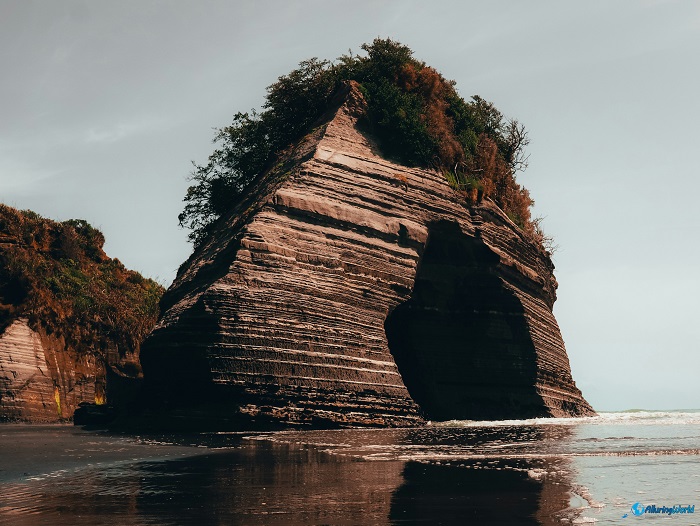
Adjacent to the Three Sisters is another remarkable formation known as the Elephant. This massive rock, when viewed from a certain angle, closely resembles an elephant, complete with a head, trunk, and body, and like the Three Sisters, the Elephant has been shaped by natural forces over thousands of years. The resemblance to an elephant is so striking that it has become one of the most photographed natural landmarks in the area, however, unfortunately, in recent years, the “trunk” of the Elephant collapsed due to further erosion, altering its iconic shape, but the formation remains a significant attraction, showcasing the impermanence and beauty of nature’s work.
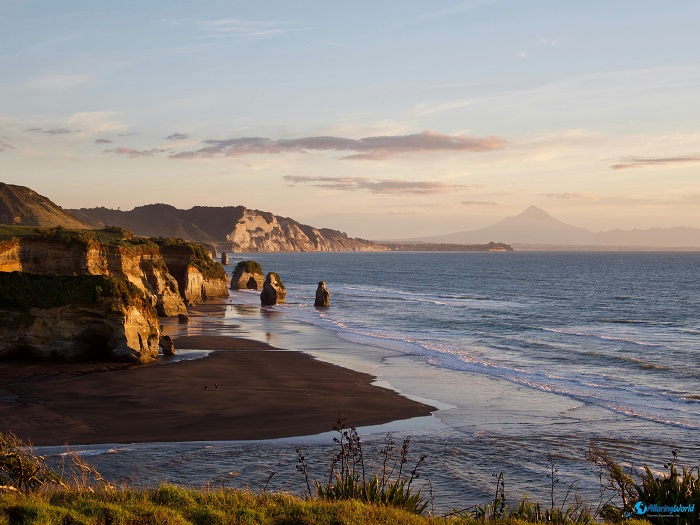
Geologically, the Three Sisters and the Elephant are composed of soft sandstone and mudstone, which are relatively weak compared to other rock types. This softness makes them particularly susceptible to erosion, especially in a coastal environment where they are constantly battered by waves, wind, and rain, and as the formations are part of the larger Taranaki Basin, it is an area that is known for its complex geological history, including volcanic activity from nearby Mount Taranaki. The layers of sandstone and mudstone that make up these formations were originally deposited millions of years ago as sediment in a shallow marine environment, but over time, these layers were uplifted and exposed to the forces of erosion, leading to the creation of the dramatic coastline that visitors see today.
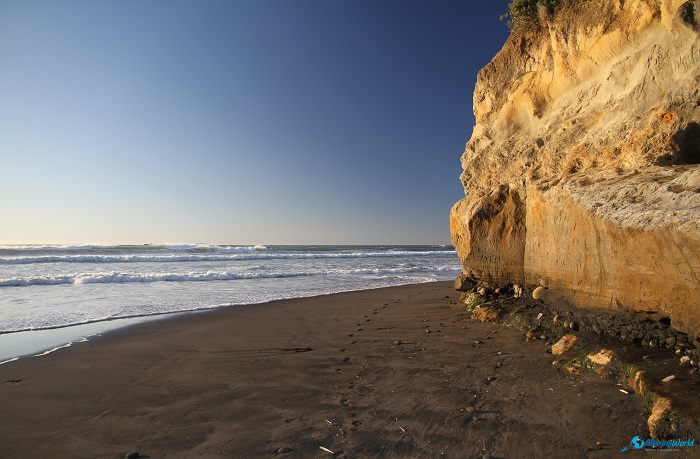
Although the area around the Three Sisters and the Elephant does not have significant archaeological sites, it is steeped in Maori cultural history because the Taranaki region is home to several Maori iwi (tribes), and the coastline, including the Tongaporutu area, holds cultural significance for them. The formations themselves are considered taonga (treasures) in Maori culture, symbolizing the connection between the land and the people, and the Maori name for the area, “Nga Motu,” means “The Islands,” referring to the various rock formations along the coast that were once part of the mainland but have been isolated by erosion. This deep cultural connection adds an extra layer of meaning for visitors who come to appreciate not just the natural beauty of the area but also its cultural heritage.
One of the most fascinating aspects of the Three Sisters and the Elephant is how the landscape around them is constantly changing. The formations are best viewed at low tide when the beach is accessible, and visitors can walk right up to the rocks, however, at high tide the beach becomes submerged, and the formations appear to rise directly out of the sea, creating a dramatic and otherworldly scene. This ever-changing environment means that no two visits are the same, as the interplay of light, tide, and weather continually transforms the appearance of the rocks and the surrounding landscape.
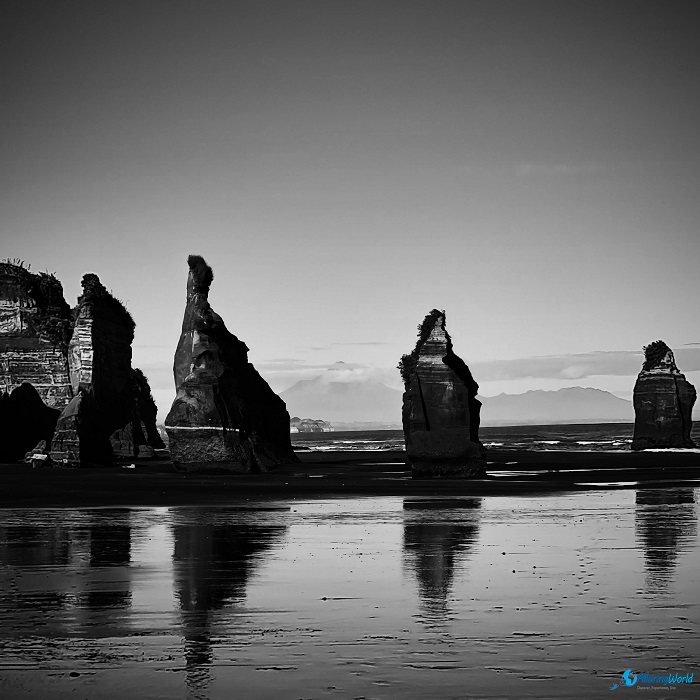
Visitors to the Three Sisters and the Elephant can access the site via a short drive from State Highway 3, which runs along the Taranaki coast. The nearest town, Tongaporutu, is about 60 km (37 mi) north of New Plymouth, the main city in the region, and from the parking area, a short walk along the Tongaporutu River leads to the beach where the formations are located. It’s important to time the visit with the tides, as access to the beach is only possible at low tide, as the walk itself is relatively easy, though the beach can be uneven and slippery in places, so sturdy footwear is recommended.
In addition to the rock formations, the area offers a variety of activities for visitors, and the beach at Tongaporutu is known for its dramatic cliffs and sea caves, which can also be explored at low tide. The caves, like the rock formations, have been carved by the relentless action of the sea and provide an intimate glimpse into the geological processes that shape the coast, but for those interested in photography, the area is a dream come true, with the ever-changing light and tide creating endless opportunities for capturing stunning images.
While visiting, it’s important to respect the natural environment, as the coastline is fragile and constantly evolving, and visitors should be aware of the tides and avoid getting too close to the cliffs, as rockfalls can occur without warning. Additionally, given the cultural significance of the area, it’s advisable to approach the visit with a sense of respect for the land and its history.
All in all, the Three Sisters and the Elephant are more than just remarkable natural formations as they are symbols of the power and beauty of nature, as well as the cultural heritage of the Taranaki region. Their ever-changing nature serves as a reminder of the dynamic processes that shape our planet and the delicate balance that exists between land and sea, and for those who make the journey to this remote and beautiful part of New Zealand, the experience of standing in the shadow of these towering rocks, with the waves crashing at their feet, is both humbling and awe-inspiring. Whether you’re a nature lover, a photographer, or simply someone looking for a unique and peaceful place to visit, the Three Sisters and the Elephant offers an unforgettable experience that captures the essence of New Zealand’s wild and rugged beauty.

